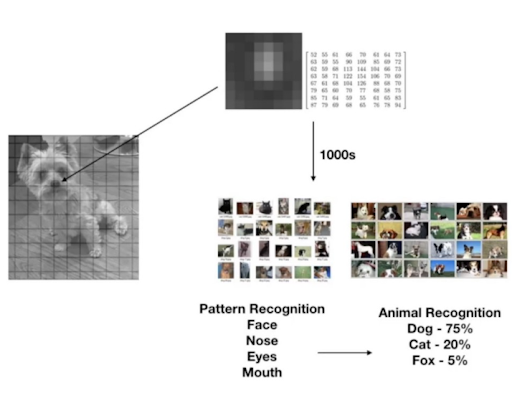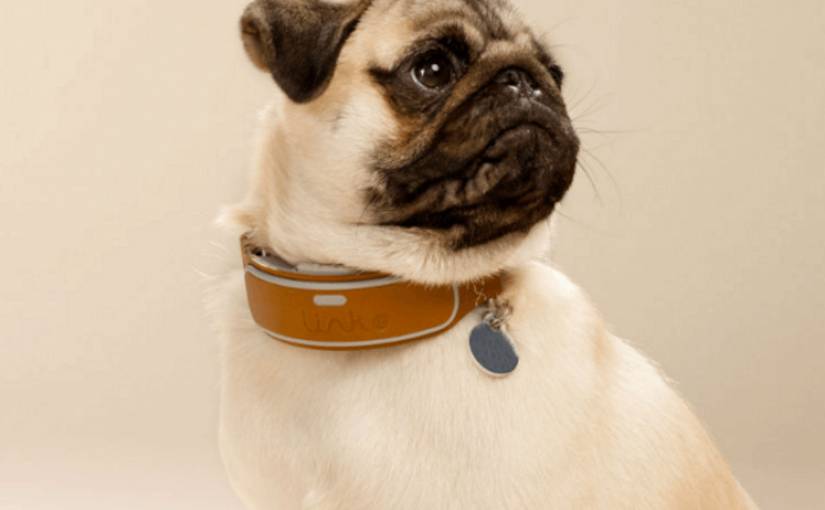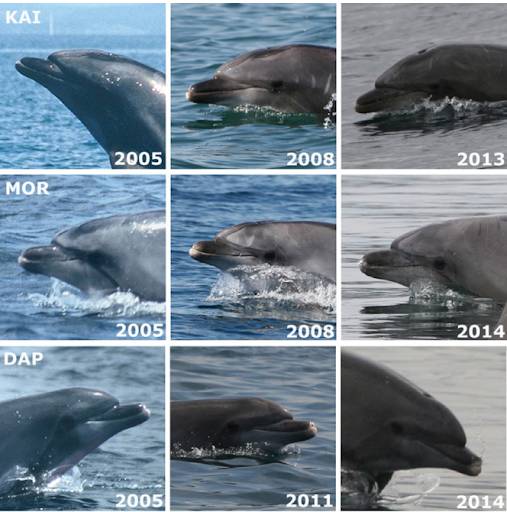Technology that can accurately recognize animals will help owners reunite with their lost pets, farmers monitor their livestock, and researchers study wild animals. There are several possibilities in that regard, with microchips being the most popular identification method for pets.
However, implanting chips requires invasive surgery. They can’t be read without a specialized device, and thieves can extract microchips if needed. Another approach is DNA analysis, which is precise, but also very costly and time-consuming.
Pet Facial Recognition With Computer Vision Software
Pet facial recognition powered by computer vision solutions can serve as a viable alternative to the methods above. Even though it has its drawbacks, the technology can demonstrate a high level of accuracy under particular circumstances.
So, how does pet face recognition operate? And what are the challenges that hinder the technology’s progress?
How Does Pet Face Recognition Work?
In general, pet facial recognition solutions work in three main steps:
- Image capturing: an animal’s photo is taken by a high-resolution camera. Some algorithms only work with predefined poses, so it is necessary to select images that comply with such criteria.
- Feature extraction: an animal’s biometric data is evaluated on suitability, and pre-processing is applied if needed. Then the algorithm extracts the set of features required for recognition.
- Matching: the extracted features are represented mathematically and matched against other images. For example, if we are looking for a dog in the lost pets database, we match the dog’s unique features against all the animals in this database.
There are several ways to perform matching. One approach is clustering using algorithms, such as KNN and DBSCAN, which will result in a set of images with high proximity to our target image, and users can select the most suitable image manually.
Also, probabilistic methods can be deployed to represent the final results as confidence levels. For example, an algorithm can determine that the captured image is a cat with a confidence of 90% and that it is a dog with a confidence of 10%.

Image Credit Here
Pet Facial Recognition Examples
Here are examples of how pet face recognition can be used in real-life. Some of these systems are successful, popular, and even commercial solutions, while others are academic attempts to test hypotheses.
Finding lost animals
Losing their pets is heartbreaking for the owners. And based on the grueling statistics, such incidences are more common than one might think. One in three of all home-owned dogs and cats in the US goes missing at one point of their life, and 80% of them are never found. There are several pet face recognition-powered initiatives to help owners find their lost friends.
ForPaws
This pet facial recognition solution identifies dogs based on their nose tip, skin color, and fur type. Owners are required to upload at least three photos to create their pet’s profile. At the moment, this solution can identify 130 dog breeds with 90% accuracy rate.
PiP
This pet recognition company developed an app that allows pet owners to register and upload photos of their animals. The system analyzes their unique facial features. If owners can provide additional information, such as gender, size, and weight, PiP claims it will be able to recognize every lost cat and dog.
Any person who finds a lost pet can use the app to look for owners. PiP’s solution also constantly scans social media for animal posts and sends missing pet alerts to residents of the relevant neighborhoods.
Love Lost
Love Lost by Petco is another app that helps pet owners and animal shelters. Owners are advised to create their animals’ profiles so that when the pet goes missing, the software can start matching the pet’s biometric information against shelter newcomers and other candidate animals.
Recognizing one specific pet
Sometimes it makes sense to train an algorithm to recognize one particular pet. For example, pet owners could benefit from a system that accurately identifies their animal and performs a consequent action, such as sending an alert or opening the door to let the pet inside. Here is one example.
Front-End Engineer, Aakaitz Garro Developed Pet Face Solution
Arkaitz Garro, a front-end engineer at WeTransfer, developed a pet face recognition solution that can identify his neighbor’s cat and send Garro an alert when the animal is at the door.
To capture the cat’s photo, Garro used a small camera and a Raspberry Pi with motion detection software. When an animal approaches the camera, the system takes a photo and sends it to AWS Recognition platform, which compares it against other images of this cat uploaded by Garro.
If it’s a match, the engineer receives a notification.
Microsoft’s IoT Device for Pet Recognition
In the same vein, Microsoft developed an IoT device that users can attach to their pet entrance. Upon recognizing the pet, the device unlocks the door letting the animal inside.
Assisting in Research Purposes — Facial Recognition of Dolphins
In addition to identifying household pets, facial recognition algorithms can be applied for detecting other species. There is a study published in the Marine Mammal Science Journal that investigated the set of features required for recognizing dolphins.
The researchers could track and photograph the same 150 bottlenose dolphins over a period of 12 years. The team wanted to evaluate the idea of using dolphins’ faces and dorsal fins for identification purposes throughout their lifetime.
Using the 150 subjects, it came down to only 31 dolphins with a comprehensive profile (i.e., clear photos from the left and right side of the face and dorsal fins). This study relied on human expert opinion and statistical methods to detect similarities between different images of the same dolphin.
The results of this experiment showed that dolphins’ facial features remain consistent over time and can be used for identification purposes. They allow recognition of calves after reaching adulthood, which significantly facilitates dolphin studies.
Helping Farmers Monitor Livestock
Identifying farm animals is a challenging process. According to Zhao Jinshi, founder of Beijing Unitrace Tech which develops software for the agricultural sector, “For pigs, it’s more difficult because pigs all look the same, but dairy cows are a bit special because they are black and white and have different shapes.”
Cows and Their Licking
However, when it comes to cows, another challenge arises – i.e., determining where to install cameras. Cows are curious animals and will notice even the slightest change in their surroundings. They would often attempt to lick the camera or otherwise interact with it.
Challenges aside, building a system that can recognize individual cows will help farmers tremendously. Such a solution could match the animal’s health conditions and its drinking and eating patterns to the animal’s identity.
Enhanced with AI, it will be able to detect any signs of illness and unusual behavior and notify the farmer in case of an emergency.
Pet Face Recognition Technology Implementation Challenges
To understand the current state of pet face recognition, we consulted ITRex Group R&D AI Scientist and computer vision expert, Diana Kulich.
As Diana pointed out, pet face recognition is far behind human face recognition technology, which is rather advanced at the moment. Researchers started experimenting with pet facial recognition about four years ago, and the accuracy of general-purpose techniques is still rather low. On the other hand, solutions with specific purposes, such as recognizing one particular animal, can be accurate.
Main Animal Facial Challenge Solutions
According to Diana, there are three main challenges companies who want to implement pet facial recognition solutions need to consider:
-
Determining the optimal set of features
Scientists have already specified a feature vector that can be used for unique human face recognition. However, the same approach doesn’t hold for pets as we are not aware of which features we need to use and how to interpret them.
For example, when dealing with people, scientists can use variational autoencoder (VAE) architecture to extract features from human faces. In this approach, photos of a person are compressed to vectors containing the desired features, such as skin tone and facial expressions.
When it comes to pet facial recognition, there is no reliable feature vector yet.
To solve the challenge of a reliable feature vector will advance the field significantly.
One open-source example in this regard is DogFaceNet, which is a deep learning-based implementation for dog identification.
It uses a dog’s eyes and nose as a feature set. This solution works reasonably well if the overall goal is to distinguish dog breeds, but its performance is rather poor when it comes to differentiating twin animals.
Depending on an Animal Pose
Another example is using Local Binary Pattern Histogram (LBPH) algorithm, which converts an image into pixels and operates by comparing pixel values of different images. This method depends on the animal’s pose, which makes it sensitive to pose variation. It’s worth mentioning that this decision is outdated. Currently, engineers aim to use more high-level features.
-
Getting animals to pose for the camera
For humans, it is easy to take a particular pose and sit still. However, matters become more complicated when we attempt to make a cat or a dog freeze in a particular pose. This point is relevant for pet face recognition algorithms that are pose-sensitive, such as the ones depending on pixel similarity.
-
Providing a comprehensive training dataset
For the training to be effective, the data must be diverse and cover all the tasks the algorithm is expected to perform. For example, if the algorithm is supposed to recognize different dog breeds, the dataset should sufficiently cover all the breeds in question captured from different angels and properly labeled. There are several things that can go wrong here. For instance, someone might submit images of mixed breeds, and someone might label their image incorrectly and assign a wrong breed name. To avoid such issues, an expert must review all photos in the dataset, one by one, to verify the legitimacy of the image and the accuracy of the label.
Conclusion
The progress in the pet face recognition field is hindered by the fact that researchers still can’t point out the optimal combination of features that can be used to accurately identify animals on a large scale. Nevertheless, there are several successful applications that operate on restricted data, such as recognizing one particular animal or a small group of domestic or wild animals.
If you are building your own pet facial recognition system, remember that animals are non-cooperative users of biometrics. Some will insist on licking the camera and others will refuse to posture up for the picture.
To eliminate unnecessary trouble, design a pose and expression-neutral algorithm. Another issue to consider is privacy regulations. If you want to build an app that finds lost pets, is it appropriate to require owners to display their location?
Even pictures of pets inside their owner’s house might already reveal more about that person than intended.
Inner Image Credit: Provided by the Author; Thank you!
Top image Credit: Provided by the Author; Thank you!



















